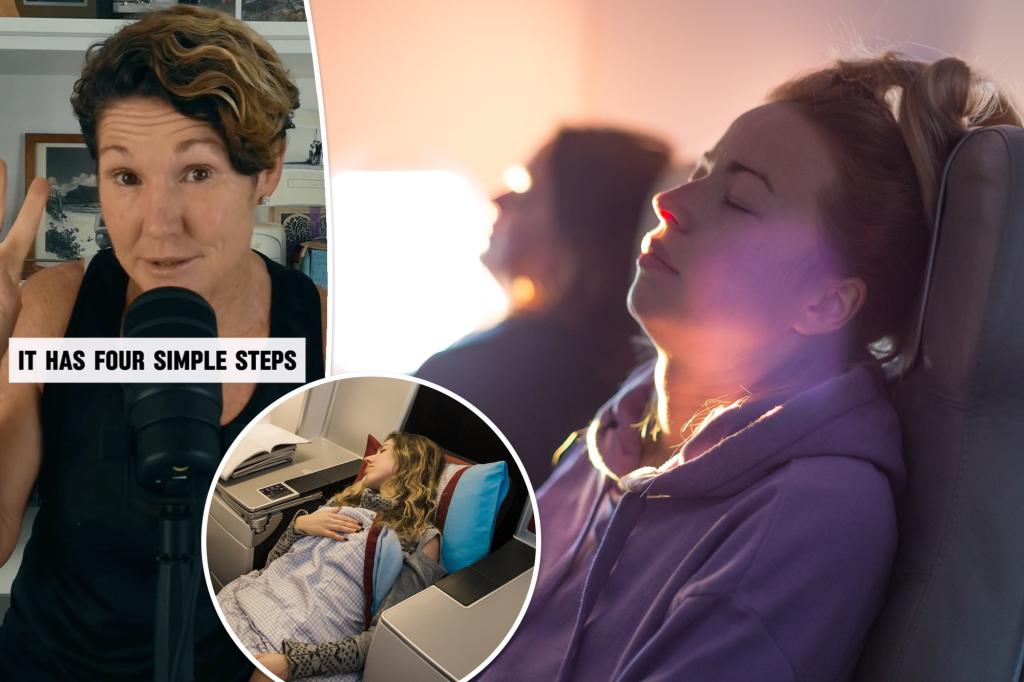Many travelers struggle to get enough sleep on airplanes due to uncomfortable seats, lack of legroom, and difficulty maintaining a stable sleeping position. However, psychologist Erica Terblanche has shared a method called “going over the alpha bridge” that she claims can help passengers fall asleep at cruising altitude. This technique involves lying down comfortably, counting to 30, opening and closing the eyes in specific intervals, and focusing on breathing. While some may fall asleep after one cycle, others may need to repeat the steps to achieve a restful slumber.
According to Terblanche, this method may be more effective than relying on traditional sleep aids like melatonin or other medications. Research has shown that passengers have difficulty falling asleep on planes due to ambient cabin noise, uncomfortable seating, and flight anxiety. This can result in poor sleep quality during flights, making it essential to find effective strategies for improving rest while traveling. While some travelers may find it challenging to sleep on airplanes, there are various techniques that experts recommend to enhance sleep quality, including avoiding alcohol, walking before boarding, listening to white noise, and choosing a strategic seat, such as the window seat, for better comfort and support.
Despite the challenges of falling asleep on airplanes, it is possible to improve sleep quality by implementing practical tips and techniques. By following Terblanche’s method of “going over the alpha bridge,” travelers may find it easier to relax and drift off to sleep during flights. By focusing on breathing and following the designated counting steps, passengers can create a calming environment conducive to restful slumber. While individual experiences may vary, this method offers a simple and accessible way for travelers to enhance their sleep on airplanes.
The issue of poor sleep quality on airplanes is a common struggle for many passengers, and finding effective strategies to address this problem is essential for overall well-being during travel. While there is no one-size-fits-all solution, experimenting with different techniques and approaches can help individuals discover what works best for them. By incorporating recommendations from sleep experts and trying out alternative methods like “going over the alpha bridge,” travelers can improve their chances of getting better sleep on flights. With continued research and innovation in this area, it is possible to create a more comfortable and restful environment for travelers who struggle with sleep on airplanes.
Ultimately, the goal of enhancing sleep quality on airplanes is to ensure that travelers arrive at their destinations feeling refreshed and ready to enjoy their journeys. By prioritizing rest and relaxation during flights, passengers can reduce stress, fatigue, and discomfort associated with poor sleep. While it may take some trial and error to find the ideal sleep routine for air travel, the benefits of improved rest can make a significant difference in overall travel experiences. With a combination of practical tips, expert advice, and personal experimentation, travelers can take proactive steps to address the challenges of sleeping on airplanes and make their journeys more enjoyable and rewarding.
In conclusion, the challenge of falling asleep on airplanes is a common concern for many travelers, but with the right strategies and techniques, it is possible to improve sleep quality during flights. By exploring different methods like “going over the alpha bridge” and incorporating expert recommendations, passengers can create a more comfortable and conducive environment for restful slumber. With a focus on relaxation, breathing, and strategic positioning, travelers can enhance their chances of getting better sleep on airplanes and enjoy a more pleasant travel experience overall. Through ongoing research and innovation in sleep science, there is potential to develop even more effective solutions for addressing sleep issues during air travel in the future.















